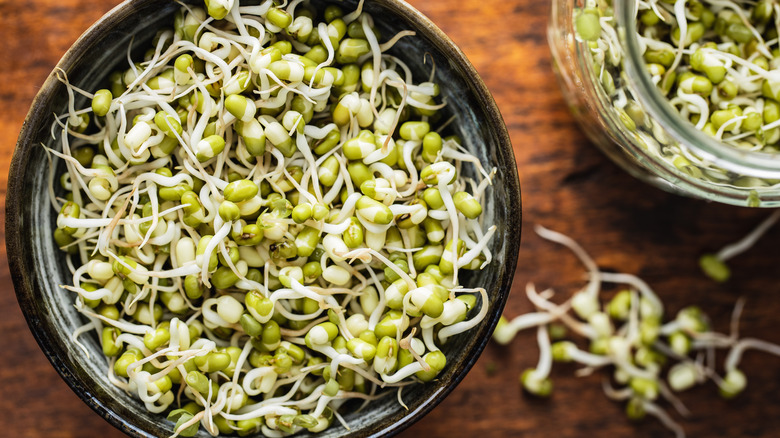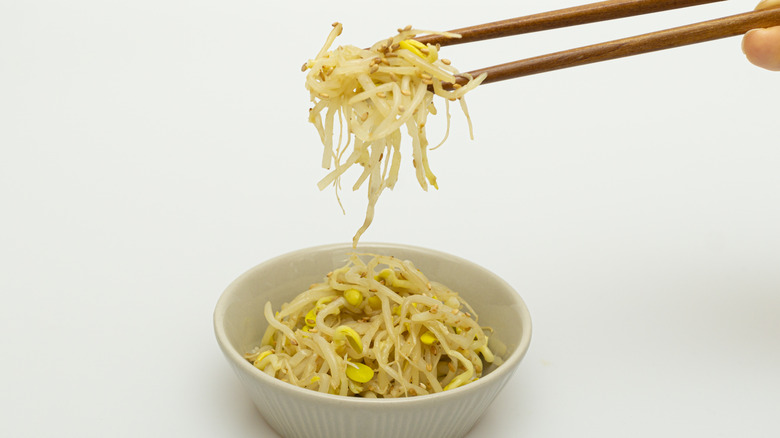Cooking Bean Sprouts Is More Important Than You Think
All sprouts are not created equal: Garlic sprouts, for example, are perfectly safe to eat but may lead to a bitter taste. Potato sprouts are deceptively dangerous: As Healthline explains, they can be toxic if eaten in large amounts, even though the potato itself may be salvageable. Other sprouts like soybean sprouts or mung bean sprouts are cultivated for consumption. You may have come across soybean sprouts when ordering a steaming hot bowl of pho that comes along as a garnish: The sprouts are usually white, skinny, and long (soybeans) or thicker and flatter (mung bean) and when eaten raw give a refreshing and crisp taste due to their water content.
Soybean and mung bean sprouts are not only delicious, but are also healthy and provide a boost of antioxidants, vitamin C, iron and calcium, as well as fiber and protein in mung bean sprouts. However, there is a danger to eating raw soybean or mung bean sprouts that you may want to be aware of before consumption.
The bacterial risk in raw sprouts
Though a crispy bean sprout texture may be nice in contrast with a bite of hot noodle soup or even in stir-fried noodles, because the sprouts are eaten raw and thus can be a hotbed for bacterial growth, they, unfortunately, pose a risk for food poisoning. According to LiveStrong, those with compromised immune systems (or pregnant persons and young babies) may want to opt instead of eating cooked soybean or mung bean sprouts instead of munching on them raw.
Fortunately, you can include cooked bean sprouts in many recipes, including that of the Korean side dish sukju-namul (named for a treacherous scholar who "went bad," as bean sprouts can go bad fairly quickly) or a stir-fry recipe for an extra boost of protein. Any potential bacteria will be eliminated in the cooking process, and the health benefits and crunchy texture will still remain, making cooked bean sprouts a win-win.

